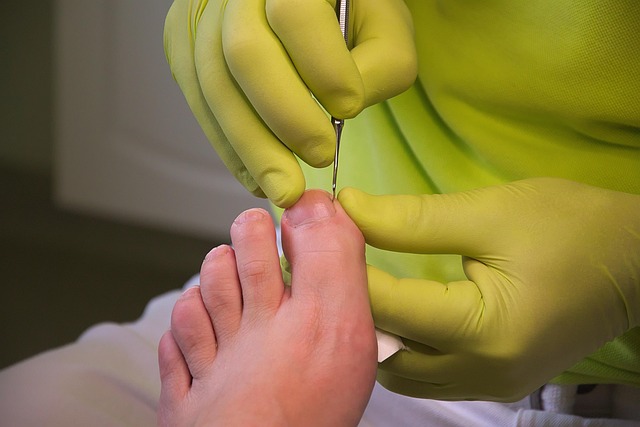Adolescent depression, characterized by mood swings and changes in appetite/sleep, requires early identification for effective management. Key treatments include Cognitive Behavioral Therapy (CBT), which targets negative thought patterns, and alternative therapies like art and music therapy. Supportive measures like family therapy sessions create a nurturing environment, fostering open communication and coping strategies. Regular check-ins ensure ongoing support, enhancing the success of adolescent depression treatment.
Adolescent depression is a significant concern, affecting millions of teens worldwide. Understanding its symptoms and early diagnosis is crucial for effective therapy options. This article delves into various therapeutic approaches designed to combat teen depression, focusing on Cognitive Behavioral Therapy (CBT) as a popular and proven method. Additionally, it explores alternatives, supportive measures, and the vital role of family involvement in treatment, offering comprehensive insights into adolescent depression treatment.
Understanding Adolescent Depression: Symptoms and Diagnosis
Adolescent depression, also known as teen depression, is a serious mental health condition that significantly impacts young people during their formative years. It’s crucial to recognize that depression in adolescents may present differently than in adults, often manifesting as irritability, mood swings, and changes in appetite or sleep patterns rather than persistent sadness. This subtle shift in symptoms can make diagnosis more complex, emphasizing the need for parents, caregivers, and educators to be vigilant.
Early identification is key to effective adolescent depression treatment. A comprehensive assessment by a qualified mental health professional is essential for accurate diagnosis, which may involve discussing symptoms, family history, and recent life events. With proper screening, treatments such as cognitive-behavioral therapy (CBT), interpersonal psychotherapy (IPT), and medication can be tailored to address the unique needs of each teen, fostering healthier coping mechanisms and improved overall well-being.
Cognitive Behavioral Therapy (CBT): A Popular and Effective Approach
Cognitive Behavioral Therapy (CBT) is a widely recognized and effective approach for treating adolescent depression. This form of therapy focuses on identifying and changing negative thought patterns and behaviors that contribute to depressive symptoms. By helping teens challenge and replace irrational beliefs with more realistic and positive ones, CBT empowers them to manage their emotions and improve their overall well-being.
CBT sessions often involve setting specific goals, learning coping strategies, and engaging in activities designed to promote a sense of mastery and self-efficacy. Through structured conversations guided by a trained therapist, teens gain insights into the connections between thoughts, feelings, and behaviors, enabling them to develop healthier ways of responding to challenging situations. This evidence-based method has shown consistent success in alleviating depressive symptoms and is considered a first-line treatment for adolescent depression.
Other Therapies: Exploring Alternatives for Teen Depression
For adolescents experiencing depression, traditional talk therapy isn’t the only path to recovery. Exploring alternative therapeutic approaches can offer fresh perspectives and tailored support. One such option is art therapy, which encourages self-expression through creative mediums like painting, drawing, or sculpting. This non-verbal form of communication can help teens convey their emotions, process experiences, and develop coping mechanisms in a unique and personal way.
Additionally, music therapy has proven effective in treating adolescent depression. Engaging with music through listening, creating, or moving to it can stimulate emotional responses and foster a sense of connection. Group music sessions also promote social interaction and shared experiences, contributing to improved mood and overall well-being. These alternative therapies complement traditional treatments, providing comprehensive adolescent depression treatment options that cater to diverse learning and expression styles.
Supportive Measures and Family Involvement in Treatment
Supportive measures play a pivotal role in adolescent depression treatment, providing a nurturing environment for teens to express their feelings and fears. This can include regular check-ins with caregivers or trusted adults, who can offer emotional backing and ensure the teen feels heard and understood. Additionally, engaging the family in therapy sessions allows for open communication, fostering an atmosphere of unity and support that is crucial for recovery.
Family involvement isn’t just beneficial; it’s often essential. Teens struggling with depression may benefit from family therapy, which addresses dynamics within the household and teaches coping strategies to both the adolescent and their parents or caregivers. This collaborative approach not only strengthens family bonds but also equips them with the tools to recognize and respond appropriately to depressive episodes, thereby enhancing the overall effectiveness of adolescent depression treatment.
Adolescent depression treatment has proven effective through various therapeutic approaches, with Cognitive Behavioral Therapy (CBT) leading as a popular and established method. However, it’s essential to recognize that each teen is unique, and exploring alternatives like dialectical behavior therapy (DBT), interpersonal therapy (IPT), or supportive measures tailored to their needs can significantly improve outcomes. Engaging the support of family members in treatment can also foster a nurturing environment, enhancing the overall well-being of teens battling depression. By combining evidence-based therapies with compassionate care, we can help adolescents navigate their journey towards recovery and rediscovering joy.
